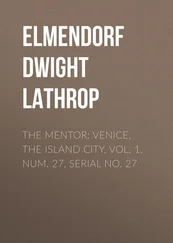The Climate City
Здесь есть возможность читать онлайн «The Climate City» — ознакомительный отрывок электронной книги совершенно бесплатно, а после прочтения отрывка купить полную версию. В некоторых случаях можно слушать аудио, скачать через торрент в формате fb2 и присутствует краткое содержание. Жанр: unrecognised, на английском языке. Описание произведения, (предисловие) а так же отзывы посетителей доступны на портале библиотеки ЛибКат.
- Название:The Climate City
- Автор:
- Жанр:
- Год:неизвестен
- ISBN:нет данных
- Рейтинг книги:4 / 5. Голосов: 1
-
Избранное:Добавить в избранное
- Отзывы:
-
Ваша оценка:
- 80
- 1
- 2
- 3
- 4
- 5
The Climate City: краткое содержание, описание и аннотация
Предлагаем к чтению аннотацию, описание, краткое содержание или предисловие (зависит от того, что написал сам автор книги «The Climate City»). Если вы не нашли необходимую информацию о книге — напишите в комментариях, мы постараемся отыскать её.
Provides professionals in finance, technology, and consulting with solutions for improving the quality of urban life under the changing climate The Climate City
The Climate City:
The Climate City
The Climate City — читать онлайн ознакомительный отрывок
Ниже представлен текст книги, разбитый по страницам. Система сохранения места последней прочитанной страницы, позволяет с удобством читать онлайн бесплатно книгу «The Climate City», без необходимости каждый раз заново искать на чём Вы остановились. Поставьте закладку, и сможете в любой момент перейти на страницу, на которой закончили чтение.
Интервал:
Закладка:
In Chapter 23, The Financed City , James Close reminds us of the challenge that 70% of emissions come from cities and over 50% of the world’s population live in cities. Cities are the foundations of our modern society and economy. As a result, they are central to managing the transition to a low-carbon, resilient future.
Cities will need to transition from their historic trajectory of high-carbon development to address climate change. Cities are well equipped to make this transition because they are dense, homogenous, and concentrated in terms of both population and infrastructure. Their long-term plans need to be informed by a compelling vision of the future and the mobilization of capital at scale for investment in businesses, communities, and infrastructure.
Net-zero carbon cities are an important aspiration. Net-zero cities will also need to reduce consumption-based emissions by adopting circular economy principles so they can eliminate their contribution to climate change. A clear vision and systemic approach reduces risk and decreases the cost of capital, supporting climate-smart investment, sustainable development, and a people-centred approach.
In Chapter 24, The Adapted City , Adam Freed puts cities on the front lines of the climate crisis, dealing with the catastrophic impacts of climate change-driven heat waves, coastal storms, droughts, and wildfires. But it’s not just climate change that is putting people at risk; it is also decades of poor urban planning and design. The shape and form of our cities will help decide how well we can withstand today’s extreme weather and what lies ahead. The chapter looks at the practical actions cities around the globe are taking to adapt to rising temperatures, too much water, and too little water, and the changes needed to scale up these actions to address the urgent reality of the risks we face. It outlines six key principles for mayors and city leaders to embrace to protect their residents from climate change, and it highlights several case studies that provide a roadmap for urban leaders on how to accelerate the breadth and scale of their work.
In Chapter 25, The Open City , Professor Peter Bishop shows us that “an open city” is spatially diverse, is generous, and celebrates its public spaces, parks, squares, and streets. They are places where citizens meet, exchange goods and ideas, debate, linger, play, and celebrate. This is where the civic life of a democratic society takes place. You can judge the health of a city by its open spaces. Public space is not a commodity, and the market will not provide it (except under very limited conditions). It is public – that is, communally owned and maintained for the use and enjoyment of all. It needs to be protected, managed, and cared for. Where it is lacking it needs to be provided, not as a luxury but as a necessity for urban living. At the time of writing, a global pandemic is causing many individuals to relearn the value of public services and community spirit and value clean air, parks, open spaces, and gardens. This chapter traces the theory and practice of providing public spaces in the city as an essential ingredient of the richness and messiness of the twenty-first-century city.
In Chapter 26, The Natural City , Carlo Laurenzi considers a range of disparate issues from asking how an artificial phenomenon, like increasing urbanization, on a planetary scale, can ever be compatible with the natural world. Architectural trends, natural geomorphological forms, and planning issues are seen under the microscope of whether they, in reality, help or hinder cities becoming more natural. Parallels are drawn between human migrations and the associated social diversity this brings to our cities, and how these compare with recent biodiversity winners and losers, as well as how terms about unwelcome visitors enter our language, discussed alongside questions about land-use and food growing. Controversial subjects like children’s education and the individual’s right to keep pets are not avoided, along with issues around health, and mental health in particular, as seen under the prism of achieving a natural city. London is used as a canvas to paint strategies and to examine what works and why; and hopefully some of these ideas will have relevance beyond the UK capital. The barriers to achieving a natural city are not centred, for once, around money or technology, but the political and social will to make it happen.
In Chapter 27, The Climate-Resilient City , Mauricio Rodas places cities as first responders to the world’s most pressing issues, such as climate change, migration, and pandemics like COVID-19. The Paris Agreement and other agendas will not be met if cities don’t take effective action, but the obstacles for cities’ direct access to international finance are hampering the required investment. Structural reforms to the global financial architecture are urgently needed to make it cities-friendly. While there is a growing supply of financing mechanisms available for cities’ climate-resilient projects, most of them are chained to national guarantees and are highly politicized. On the other hand, cities often lack regulatory certainty, project preparation capacity, and creditworthiness. There is a clear dissonance between financial supply and demand, which impedes capital flows from coming. In spite of these shortcomings, particularly in the developing world, cities find ways to finance infrastructure projects. It was thanks to innovation that during my mayoral term in Quito, the municipality managed to successfully build the first metro line in Ecuador. Innovation is key, but more remains to be done. There is a great opportunity to disburse resources directly into cities through COVID-19 stimulus packages. If this unfolds properly, it can become a historic milestone, recognizing cities’ need to improve their access to finance as the only way to develop the infrastructure transformation required to foster a more climate-resilient future.
In Chapter 28, The Green City , The Lord Mayor of Copenhagen gives us the story of green leadership in Copenhagen through more than a decade. The chapter outlines the city’s journey from 2009 when it adopted the goal of becoming the first carbon neutral capital in the world to where it is today. In 2025, Copenhagen will be a city with cleaner air, less noise, energy-efficient buildings, and green transportation. Already, the city has reduced its carbon emissions by close to 50%, while at the same time experiencing an increase in the social economic index. Copenhagen has shown and continues to show that through new solutions, green investments, and new habits, cities and citizens can enjoy green growth and green jobs in a green city. The city’s approach has been refined over the years, but the principle is the same: Copenhagen incorporates data, research, analyses, and stakeholders in its initiatives. It strives to continuously develop its cooperation with businesses, universities, and research institutes as it implements its plans revolving around energy consumption, energy production, mobility, and administration initiatives. The green city aims to inspire others in the green transition, just as it always seeks to gain inspiration from around the globe.
In Chapter 29, The Powerful City , Mark Watts and Sarah Lewis show us “a shared responsibility”. This chapter outlines how entrepreneurial big-city mayors are driving global progress on climate change. It shows that overcoming climate breakdown requires governmental leadership to set a clear policy direction, and create and shape markets necessary to meet science-based climate targets, working with a dynamic, mission-driven private sector that responds to the opportunity to create a new economy based on sustainability and fairness. Using examples from the C40 group of the world’s 100 most influential mayors, the chapter considers how mayors are often working beyond their formal powers and working together across geographic and political boundaries to demonstrate how to deliver the future we want, rather than the one we are hurtling towards, creating opportunity for green investors, entrepreneurs, and communities to thrive along the way.
Читать дальшеИнтервал:
Закладка:
Похожие книги на «The Climate City»
Представляем Вашему вниманию похожие книги на «The Climate City» списком для выбора. Мы отобрали схожую по названию и смыслу литературу в надежде предоставить читателям больше вариантов отыскать новые, интересные, ещё непрочитанные произведения.
Обсуждение, отзывы о книге «The Climate City» и просто собственные мнения читателей. Оставьте ваши комментарии, напишите, что Вы думаете о произведении, его смысле или главных героях. Укажите что конкретно понравилось, а что нет, и почему Вы так считаете.











